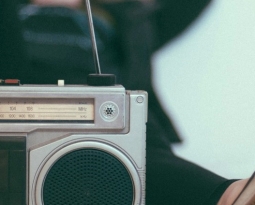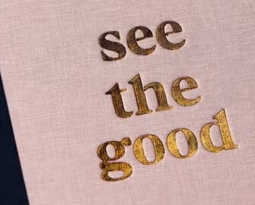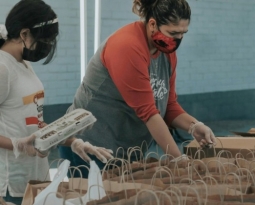To mark Self-Injury Action Day I thought that I would write an article explaining what self-injury is, how you can help your loved ones if they use self-injury to cope with difficult emotions and how those that self-injure can help themselves to live with, decrease or possibly stop self-injuring.
Self-injury Action Day is held on the 1st March every year. It is a worldwide event to raise the awareness of self-injury globally and it offers education and raises awareness for people that don’t self-injure as well as providing help and support to those that do self-injure.
As the parent of a child that has used self-injury to deal with difficult feelings and emotions, I am a strong supporter of raising awareness of this issue. Awareness increases people’s empathy and understanding of self-injury and reduces the judgement and fear felt by those who do not understand it. The higher the awareness of others, the fewer people will suffer in silence unwilling, unable or scared of reaching out for help.
What is self-injury?
Self-injury is a coping mechanism. It falls under the umbrella of self-harm but where self-harm can include addictions, neglect, eating disorders and risky behaviour, self-injury specifically refers to causing injury or damage to your own body. Injury covers many different behaviours like cutting, ingesting poison, burning, bruising and hairpulling to name a few.
Why do people self-injure?
People usually self-injure to bring relief from difficult feelings, physical pain can be easier to deal with than emotional pain, or to feel something to break a feeling of numbness.
Self-injury is not a suicidal action, but it can be dangerous if not done safely by using clean implements, cleaning wounds and being aware of places that are unsafe to cut.
Self-injury is usually cyclical, the need to self-injure grows until it becomes a strong and irresistible urge. The act of self-injury is often followed by feelings of calm and relief which often then turn into feelings of shame, embarrassment and regret with the person often vowing to themselves that they will never self-injure again.
How can you help loved ones?
Finding out that a friend or family member is self-injuring can be frightening and upsetting but how you react is very important to allow the lines of communication to stay open. Often acceptance and a lack of action can help to gain trust and acceptance from a person that is using self-injury to cope with intense feelings.
Try to be non-judgmental and offer empathy and understanding for what they are doing.
Try to see them as a whole person, not just their self-harm.
Don’t issue an ultimatum or no-harm contract – self-injury is a coping mechanism; it isn’t fair to take it away without providing an alternative.
Be available to listen and let them know that you are there for them but don’t force them to talk.
Don’t label their behaviour as attention-seeking it usually isn’t. Even when it is, remember that it is ok to ask for attention and many people find it difficult to ask directly for what they need especially when they are in distress.
Try to be honest with them and take responsibility for any fears that you may have.
Don’t ignore their injuries but do not overly focus on them either.
Encourage or help them to seek help but don’t force it.
Let them be in charge of their own decisions.
If you are a friend of a child that is self-injuring encourage them to speak to a trusted adult.
Remember that having friends or family members that self-injure can be extremely upsetting. You may be feeling sad, angry, guilty or helpless. There are helplines and support groups for you as well (see below). Make sure that you take care of yourself and put boundaries in place as to what sort of help you can offer.
Coping strategies
Coping strategies work to varying degrees with different people and it can take time to find a coping strategy that works for you. Coping strategies can be supported by counsellors that specialise in helping those that self-injure or other groups that provide support for those that self-injure. (See below)
If you are self-injuring or feeling the urge to self-injure these are examples of coping strategies that might help.
Call someone – a friend, someone you know who also experiences the urge to self-injure or a helpline.
Create something – art, a piece of writing.
Give yourself permission to self-injure, but not just yet – the ‘15-minute rule’. Choose to wait and see how you feel in 15 minutes. It is your choice to self-injure and it is also your choice to wait 15 minutes, and then another 15 minutes and so on.
Surf the urge – see the urge to self-injure as a wave that will pass even if you don’t act upon it. Observe how it builds to a crescendo and then ebbs away.
The ‘everything but’ rule – If you have a ritual around self-injury carry out the ritual right up until the point where you would normally self-injure and then stop and put it all away.
A distraction box – a box that you get out when you feel the urge to self-injure filled with items like a stress ball, music, photographs, anything that calms you.
HALT – Hungry? Angry? Lonely? Tired? Take time to consider how you are feeling and how to rectify those feelings. If you are hungry eat, make sure you are getting good quality sleep, make time for social interactions, accept your anger and try not to let it get out of control. Whenever you are feeling low or distressed consider these things and act to bring yourself into balance.
Lastly, try not to cope on your own. Reach out to friends, family, professionals or support groups.
Where to get help
Lifesigns – www.lifesigns.org.uk/siad/
Mind – call 0300 123 3393 or text 86463 (9am to 6pm on weekdays)
Harmless – email info@harmless.org.uk
Young Minds Parent’s Helpline – call 0808 802 5544 (9.30am to 4pm on weekdays)
National Self Harm Network – www.nshn.co.uk
Health for Teens – www.healthforteens.co.uk/feelings/self-harm/









